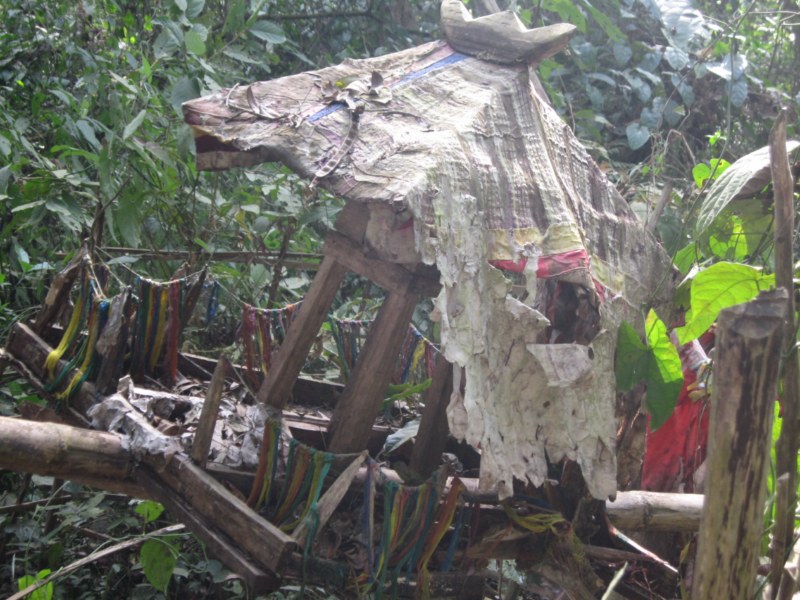They burn money here.
It is 7 o’clock in the evening just a few days after the new year; the year of the tiger. Any baby born this year will be strong and fierce, like the tiger. A man is squatting in the gutter tending a little bonfire. I make as if to take a photo, but he waves me away. I look again, hardly able to believe what I am seeing. For there, on a street in Hanoi, one of the poorest and overcrowded cities in the world, he is burning dollar bills, not just one or two but hundreds of them in all denominations. There must be about five thousand dollars going up in flames in front of my eyes. A few yards away, another man is doing the same thing, and on the corner a woman is stuffing twenty dollar bills into a big brazier. All over the city they are burning money.
What is going on? My guide explains. ‘At the new year, we remember our ancestors and we make gifts to appease their spirits and give ourselves good karma. It’s not real money, but fake paper money. Some also burn paper models of cars, servants, possessions. You see, we believe in the afterlife here. If we can appease the spirits of our ancestors, then we will have a good life too. It will bring us luck.’
In the Buddhist temples, they sell paper effigies like soldiers in red coats and hats to burn. Buddhism sits comfortably alongside superstition here. Many of the tribes in the country are animist, they believe in spirits. In a wood outside a village in Northern Laos, just a dozen miles or so from the Chinese border, we came across a group of huts on stilts topped by a pole bearing the remains of a flag. The huts were surrounded by a stockade and a moat. There was a wooden board in front of it bearing a photograph of the deceased and the dates of his life. His possessions were stacked under the eaves together with the remains of food and flowers.
‘When a parent dies, we look after his spirit in death in the same way as we looked after his body in life. That way we will get good karma and show our children how to look after us when our time comes.’
‘But the people who live in the village, the Black Tai, do not go to the wood after dark. They are afraid of the spirits.’
A few days later, in the Khmer village, we came across an structure that looked like two sets of poles for growing runner beans. Between it was a table with clay figurines on it.
”The people here believe that if they touch the body of a dead person, they will die. So the shaman builds these arches and covers them with leaves and symbols. The relatives then pass through the arches three times and leaves a clay model on the table to protect them from the spirits who might take them too.’
We met the shaman, jolly toothless man with a wispy beard, no shirt and a cigarette tucked behind his ear. My guide left him some indigestion tablets for his wife. Strong medicine!



